Popular categories
Looking for a yarn?

100% Wool
from 2.00 £ /50g
Order DROPS Needles & Hooks
Clicking the ORDER button will redirect you to Wool Warehouse Direct Ltd website
The yarn cost is calculated from the pattern’s smallest size and the yarn’s cheapest product type. Looking for an even better price? You might find it on the DROPS Deals!
Campus Rally Vest
Knitted vest in 1 strand DROPS Snow or 2 strands DROPS Air. The piece is worked from the bottom up in stocking stitch, with V-neck and splits in the sides. Sizes S - XXXL.
DROPS Design: Pattern ee-753
Yarn group E or C + C
-------------------------------------------------------
SIZES:
S - M - L - XL - XXL - XXXL
YARN:
DROPS SNOW from Garnstudio (belongs to yarn group E)
400-450-450-500-550-600 g colour 106, lemonade
Or use:
DROPS AIR from Garnstudio (belongs to yarn group C)
300-300-350-350-400-450 g colour 40, lemonade
NEEDLES:
DROPS CIRCULAR NEEDLE SIZE 8 MM: Length 80 cm.
DROPS CIRCULAR NEEDLE SIZE 7 MM: Length 40 cm and 80 cm.
The technique MAGIC LOOP can be used – you then only need circular needle of 80 cm in each size.
KNITTING TENSION:
11 stitches in width and 15 rows in height with stocking stitch and 1 strand Snow or 2 strands Air = 10 x 10 cm.
NOTE: Needle size is only a guide. If you get too many stitches on 10 cm, change to a larger needle size. If you get too few stitches on 10 cm, change to a smaller needle size.
-------------------------------------------------------
Alternative Yarn – See how to change yarns here
Yarn Groups A to F – Use the same pattern and change the yarn here
Yarn usage using an alternative yarn – Use our yarn converter here
-------------------------------------------------------
Women Vests Slipovers Chunky Knitsbottom up chunky knits oversized stocking stitch v-neck

100% Wool
from 2.00 £ /50g
Order DROPS Needles & Hooks
Clicking the ORDER button will redirect you to Wool Warehouse Direct Ltd website
The yarn cost is calculated from the pattern’s smallest size and the yarn’s cheapest product type. Looking for an even better price? You might find it on the DROPS Deals!
- English (UK/cm)
- Česky
- Dansk
- Deutsch
- Eesti keel
- English (US/in)
- Español
- Français
- Íslenska
- Italiano
- Magyar
- Nederlands
- Norsk
- Polski
- Português
- Suomi
- Svenska
- English (UK/cm), Bulgaria
- English (UK/cm), Croatia
- English (UK/cm), Greece
- English (UK/cm), Latvia
- English (UK/cm), Lithuania
- English (UK/cm), Romania
- English (UK/cm), Slovenia
- Česky, Slovakia
Pattern instructions
EXPLANATIONS FOR THE PATTERN:
-------------------------------------------------------
RIDGE/GARTER STITCH (worked back and forth):
Knit all rows.
1 ridge = knit 2 rows.
DECREASE TIP (for the V-neck and sleeve edges):
Work until there is 1 stitch left before the knitted stitch mid-front/mid-under the sleeve, slip 2 stitches as if to knit together, knit 1, pass the 2 slipped stitches over the knitted stitch (= 2 stitches decreased). This gives you a neat edge and the knitted stitch follows in a straight line.
-------------------------------------------------------
START THE PIECE HERE:
-------------------------------------------------------
VEST – SHORT OVERVIEW OF THE PIECE:
The front and back pieces are worked separately, back and forth and bottom up. The piece is sewn together, then edges worked around the V-neck and the armholes.
BACK PIECE:
Cast on 68-72-76-80-88-96 stitches with circular needle size 7 mm and 1 strand DROPS Snow or 2 strands DROPS Air. Work the first row as follows from the right side: 1 stitch in GARTER STITCH – read description above, rib (knit 2, purl 2) until there are 3 stitches left, knit 2 and 1 stitch in garter stitch.
Continue this rib for 10 cm and with the next row from the right side.
Work 1 stitch in garter stitch, then stocking stitch and decrease 13-13-15-15-17-19 stitches evenly spaced and 1 stitch in garter stitch = 55-59-61-65-71-77 stitches.
Change to circular needle size 8 mm and continue with stocking stitch and 1 stitch in garter stitch on each side.
REMEMBER THE KNITTING TENSION!
When the piece measures 24-25-26-27-28-29 cm, cast off for the armholes on every other row (at the beginning of every row) as follows: Cast off 3 stitches 1-1-1-1-2-2 times, 2 stitches 0-1-1-1-1-1 times and 1 stitch 6-5-4-4-3-3 times on each side = 37-39-43-47-49-55 stitches. Continue with stocking stitch.
When the piece measures 51-53-55-57-59-61 cm, cast off the middle 19-19-21-23-23-25 stitches for the neck and finish each shoulder separately.
Continue with stocking stitch and cast off 1 stitch on the next row from the neck = 8-9-10-11-12-14 stitches on the shoulder. Continue until the piece measures 54-56-58-60-62-64 cm. Cast off loosely with knit from the right side. Work the other shoulder in the same way.
FRONT PIECE:
Cast on and work in the same way as the back piece until the front measures 24-25-26-27-28-29 cm. Cast off for the armholes in the same way as on the back piece.
AT THE SAME TIME when the piece measures 29-31-33-34-36-37 cm, divide for the V-neck as follows:
Place the middle stitch on a thread (= mid-stitch, which will be on the thread until the neck-edge is worked). Place the stitches after the mid-stitch (seen from the right side) on a different thread and work the left front piece.
LEFT FRONT PIECE:
Continue with stocking stitch and 1 stitch in garter stitch by the neck – continue to cast off for the armhole. On the first row from the right side work until there are 3 stitches left, knit 2 together (= 1 stitch decreased) and 1 stitch in garter stitch. Decrease like this every 2nd row 4-4-5-5-5-5 times, then every 4th row 6-6-6-7-7-8 times. When all the decreases for the neck are finished there are 8-9-10-11-12-14 stitches on the shoulder. Continue working until the piece measures 54-56-58-60-62-64 cm. Cast off.
RIGHT FRONT PIECE:
Continue with stocking stitch and 1 stitch in garter stitch by the neck – continue to cast off for the armhole. On the first row from the right side work 1 stitch in garter stitch, slip 1 stitch as if to knit, knit 1 and pass the slipped stitch over the knitted stitch (= 1 stitch decreased), then work as before to the end of the row. Decrease like this every 2nd row 4-4-5-5-5-5 times, then every 4th row 6-6-6-7-7-8 times. When all the decreases for the neck are finished there are 8-9-10-11-12-14 stitches on the shoulder. Continue working until the piece measures 54-56-58-60-62-64 cm. Cast off.
ASSEMBLY:
Sew the shoulder seams. Sew the side seams, sewing in the outermost loop of the outermost stitch, working from the bottom of the armholes and downwards, leaving a 10 cm split at the bottom.
V-NECK:
Start from the right side, mid-front with 1 strand DROPS Snow or 2 strands DROPS Air. Use short circular needle size 7 mm and knit up 83 to 91 stitches around the neck (including the 1 stitch on the thread mid-front). The stitch-number should be divisible by 4 + 3. Start by the mid-stitch and knit this stitch, then work rib (purl 2, knit 2). AT THE SAME TIME on every 2nd round decrease 2 stitches mid-front - read DECREASE TIP. Continue this rib for 4 cm. Cast off with knit over knit and purl over purl.
SLEEVE-EDGES:
Start mid-under the sleeve with 1 strand DROPS Snow or 2 strands DROPS Air. Use short circular needle size 7 mm and knit up (from the right side and inside 1 stitch) 71-83 stitches around the armhole (the stitch-number should be divisible by 4 + 3). Insert a marker in the first stitch (= mid-under the sleeve) and knit this stitch, then work rib (purl 2, knit 2). AT THE SAME TIME on every 2nd round decrease 2 stitches mid-under the sleeve - remember DECREASE TIP. Continue this rib for 5 cm. Cast off with knit over knit and purl over purl. Work the other sleeve-edge in the same way.
Diagram
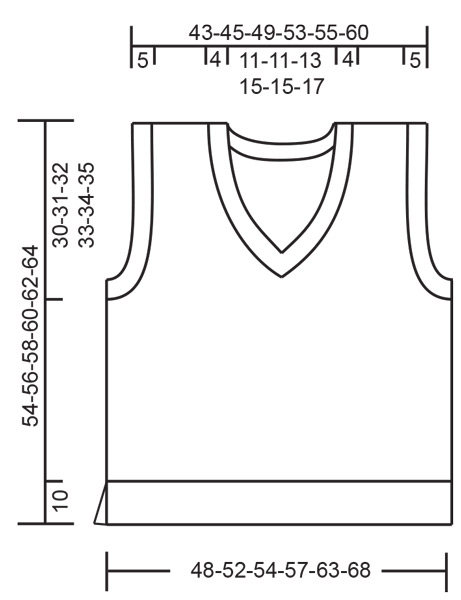
What can you do with our patterns? You can share DROPS patterns online, using the pattern original picture, materials, name and number. But you are NOT ALLOWED to reproduce the complete pattern digitally in any way. Yarn stores are welcome to use the DROPS pattern database to promote the sale of our assortment. You can print out our patterns, make as many copies as you’d like. The only thing we ask is that you don't make any changes / additions to the original printed document. And that the patterns according to the DROPS philosophy are given out to the consumers for free. Editorials that wish to publish our patterns in printed books or magazines can contact us for more information. The sale of garments based on DROPS patterns is permitted as long as they are sold as single items or per order. Further commercial use of the patterns is not permitted. It has to be clearly stated that the garment is made based on a design from DROPS DESIGN. The use of clothing labels of which DROPS DESIGN forms part is conditioned by the inclusion of the following text: “A DROPS DESIGN made by …..”. The use of DROPS photos for marketing purposes/sales is only permitted in connection with the use/sale of DROPS products. The photos may not be cut or edited and the logo should be clearly visible.
We reserve the right to withdraw the permission for use of our patterns at any time, notwithstanding the reason.
Each of our patterns has specific tutorial videos to help you.
These step-by-step tutorials might also help you:
Why is the knitting/crochet tension so important?
Knitting tension is what determines the final measurements of your work, and is usually measured per 10 x 10 cm. It is provided like so: number of stitches in width x number of rows in height - eg: 19 stitches x 26 rows = 10 x 10 cm.
The knitting tension is very individual; some people knit/crochet loosely while others work tightly. You adjust the knitting tension with the needle size, which is why the suggested needle size is only meant as a guide! You need to adjust this (up or down) to ensure that YOUR knitting tension matches the knitting tension provided in the pattern. If you work with a different knitting tension than provided you will have a different yarn consumption, and your work will have different measurements than what the pattern suggests.
The knitting tension also determines which yarns can replace each other. As long as you achieve the same knitting tension you can replace one yarn with another.
See DROPS lesson: How to measure your tension/gauge
See DROPS video: How to make a gauge tension swatch
How do I know how many balls of yarn I need?
The required amount of yarn is provided in grams, eg: 450 g. To calculate how many balls you’ll need you first need to know how many grams are in 1 ball (25g, 50g or 100g). This information is available if you click on the individual yarn quality on our pages. Divide the amount required with the amount of each ball. For example, if each ball is 50g (the most common amount), the calculation will be as follows: 450 / 50 = 9 balls.
Can I use a different yarn than what the pattern suggests?
The important thing when changing from one yarn to another is that the knitting/crochet tension remains the same. This is so that the measurements of the finished piece will be the same as on the sketch provided. It is easier to achieve the same knitting tension using yarns from the same yarn group. It is also possible to work with multiple strands of a thinner yarn to achieve the knitting tension of a thicker one. Please try our yarn converter. We recommend you to always work a test swatch.
Please NOTE: when changing yarn the garment might have a different look and feel to the garment in the photo, due to individual properties and qualities of each yarn.
See DROPS lesson: Can I use a different yarn than the one mentioned in the pattern?
What are the yarn groups?
All our yarns are categorised into yarn groups (from A to F) according to thickness and knitting tension – group A contains the thinnest yarns and group F the thickest. This makes it easier for you to find alternative yarns to our patterns, should you wish to switch yarn. All yarns within the same group have a similar knitting tension and can easily replace each other. However, different yarn qualities have different structures and properties which will give the finished work a unique look and feel.
How do I use the yarn calculator?
At the top of all our patterns you’ll find a link to our yarn calculator, which is a helpful tool should you wish to use a different yarn than suggested. By filling in the yarn quality you wish to replace, the amount (in your size) and number of strands, the calculator will present good alternative yarns with the same knitting tension. Additionally it will tell you how much you’ll require in the new qualities and whether you’ll need to work with multiple strands. Most skeins are 50g (some are 25g or 100g).
If the pattern is worked with multiple colours, every colour will have to be calculated separately. Similarly, if the pattern is worked with several strands of different yarns (for example 1 strand Alpaca and 1 strand Kid-Silk) you will have to find alternatives for each, individually.
Why do you show discontinued yarns in the patterns?
Since different yarns have different qualities and textures we have chosen to keep the original yarn in our patterns. However, you can easily find options among our available qualities by using our yarn calculator, or simply pick a yarn from the same yarn group.
It is possible that some retailers still have discontinued yarns in stock, or that someone has a few skeins at home that they would like to find patterns for.
The yarn calculator will provide both alternative yarn as well as required amount in the new quality.
What size should I knit?
If you think it's hard to decide what size to make, it can be a good idea to measure a garment you own already and like the size of. Then you can pick the size by comparing those measures with the ones available in the pattern's size chart.
You'll find the size chart at the bottom of the pattern.
See DROPS lesson: How to read size chart
Why do I get the wrong knitting tension with the suggested needle size?
The needle size provided in the pattern serves only as a guide, the important thing is to follow the knitting tension. And since knitting tension is very individual, you will have to adjust the needle size to ensure that YOUR tension is the same as in the pattern – maybe you’ll have to adjust 1, or even 2 needle sizes, up or down to achieve the correct tension. For this, we recommend that you work test swatches.
Should you work with a different knitting tension than the one provided, the measurements of the finished garment might deviate from the measurement sketch.
See DROPS lesson: How to measure your tension/gauge
See DROPS video: How to make a tension/gauge swatch
Why is the pattern worked top-down?
Working a garment top-down provides more flexibility and room for personal adjustment. For example it is easier to try the garment on while working, as well as making adjustments to length of yoke and shoulder caps.
The instructions are carefully explaining every step, in the correct order. Diagrams are adjusted to the knitting direction and are worked as usual.
How do I work according to a knitting diagram?
The diagram depicts all rows/rounds, and every stitch seen from the right side. It is read from bottom to top, from right to left. 1 square = 1 stitch.
When working back and forth, every other row is worked from the right side and every other row is worked from the wrong side. When working from the wrong side, the diagram will have to be worked reversed: from left to right, knit stitches are purled, purl stitches are knit etc.
When working in the round every round is worked from the right side and the diagram are worked from right to left on all rounds.
See DROPS lesson: How to read knitting diagrams
How do I work according to a crochet diagram?
The diagram depicts all rows/rounds, and every stitch seen from the right side. It is worked from bottom to top, from right to left.
When working back and forth every other row is worked from the right side: from right to left and every other row is worked from the wrong side: from left to right.
When working in the round, every row in the diagram are worked from the right side, from right to left.
When working a circular diagram you start in the middle and work your way outwards, counter clockwise, row by row.
The rows usually start with a given number of chain stitches (equivalent to the height of the following stitch), this will either be depicted in the diagram or explained in the pattern.
See DROPS lesson: How to read crochet diagrams
How do I work several diagrams simultaneously on the same row/round?
Instructions for working several diagrams after each other on the same row/round, will often be written like so: “work A.1, A.2, A.3 a total of 0-0-2-3-4 times". This means you work A.1 once, then A.2 is worked once, and A.3 is repeated (in width) the number of times provided for your size – in this case like so: S = 0 times, M = 0 times, L=2 times, XL= 3 times and XXL = 4 times.
The diagrams are worked as usual: begin with the first row in A.1, then work the first row in A.2 etc.
See DROPS lesson: How to read knitting diagrams
See DROPS lesson: How to read crochet diagrams
Why are the sleeves shorter in larger sizes?
The total width of the garment (from wrist-to-wrist) will be larger in the larger sizes, despite the actual sleeves being shorter. The larger sizes have longer sleeve caps and wider shoulders, so there will be a good fit in all sizes.
Where on the garment is the length measured?
The measurement sketch/schematic drawing provides information regarding the full length of the garment. If it’s a jumper or a jacket the length is measured from the highest point on the shoulder closest to the neckline, and straight down to the bottom of the garment. It is NOT measured from the tip of shoulder. Similarly, the length of yoke is measured from the highest point on the shoulder and down to where yoke is split into body and sleeves.
On a jacket measures are never taken along bands, unless specifically stated. Always measure inside band stitches when measuring the length.
See DROPS lesson: How to read a schematic drawing
What is a repeat?
Diagrams are often repeated on the round or in height. 1 repeat is the diagram the way it appears in the pattern. If it says to work 5 repeats of A.1 in the round, then you work A.1 a total of 5 times after/next to each other in the round. If it says to work 2 repeats of A.1 vertically/in height you work the entire diagram once, then begin again at the start and work the entire diagram one more time.
Why does the piece start with more chain stitches than it’s worked with?
Chain stitches are slightly narrower than other stitches and to avoid working the cast-on edge too tight, we simply chain more stitches to begin with. The stitch count will be adjusted on the following row to fit the pattern and measurement sketch.
Why increase before the rib edge when the piece is worked top-down?
The rib edge is more elastic and will contract slightly compared to, for example, stocking stitch. By increasing before the rib edge, you avoid a visible difference in width between the rib edge and the rest of the body.
Why increase in the cast-off edge?
It’s very easy to cast off too tightly, and by making yarn overs while casting off (and simultaneously casting these off) you avoid a too tight cast off edge.
See DROPS video: How to bind off with yarn overs (yo)
How do I increase/decrease on every 3rd and 4th row/round alternately?
To achieve an even increase (or decrease) you can increase on, for example: every 3rd and 4th row alternately, like so: work 2 rows and increase on the 3rd row, work 3 rows and increase on the 4th. Repeat this until the increase is complete.
See DROPS lesson: Increase or decrease 1 st on every 3rd and 4th row alternately
How can I work a jacket in the round instead of back and forth?
Should you prefer to work in the round instead of back and forth, you may of course adjust the pattern. You’ll need to add steeks mid-front (usually 5 stitches), and follow the instructions. When you would normally turn and work from the wrong side, simply work across the steek and continue in the round. At the end you’ll cut the piece open, pick up stitches to work bands, and cover the cut edges.
See DROPS video: How to knit steeks and cut open
Can I work a jumper back and forth instead of in the round?
Should you prefer to work back and forth instead of in the round, you may of course adjust the pattern so you work the pieces separately and then assemble them at the end. Divide the stitches for the body in 2, add 1 edge stitch in each side (for sewing) and work the front and back pieces separately.
See DROPS lesson: Can I adapt a pattern for circular needles into straight needles?
Why is the pattern slightly different than what I see in the photo?
Pattern repeats can vary slightly in the different sizes, in order to get the correct proportions. If you’re not working the exact same size as the garment in the photo, yours might deviate slightly. This has been carefully developed and adjusted so that the complete impression of the garment is the same in all sizes.
Make sure to follow instructions and diagrams for your size!
How do I make a women’s size garment into a men’s size one?
If you have found a pattern you like which is available in women’s size it’s not very difficult to convert it to men’s size. The biggest difference will be the length of sleeves and body. Start working on the women size that you think would fit across the chest. The additional length will be worked right before you cast off for the armhole/sleeve cap. If the pattern is worked top-down you can add the length right after the armhole or before the first decrease on sleeve.
Regarding additional yarn amount, this will depend on how much length you add, but it is better with a skein too many than too few.
How do I prevent a hairy garment from shedding?
All yarns will have excess fibres (from production) that might come off as lint or shedding. Brushed yarns (ie hairier yarns) have more of these loose, excess fibres, causing more shedding.
Shedding also depends on what is worn under or over the garment, and whether this pulls at the yarn fibres. It’s therefore not possible to guarantee that there will be no shedding
Below are some tips on how to get the best result when working with hairier yarns:
1. When the garment is finished (before you wash it) shake it vigorously so the looser hairs come off. NOTE: do NOT use a lint roller, brush or any method that pulls at the yarn.
2. Place the garment in a plastic bag and put it in your freezer - the temperature will cause the fibres to become less attached to each other, and excess fibres will come off easier.
3. Leave in the freezer for a few hours before taking it out and shaking it again.
4. Wash the garment according to the instructions on the yarn label.
Why does my garment pill?
Pilling is a natural process that happens to even the most exclusive of fibers. It's a natural sign of wear and tear that is hard to avoid, and that is most visible in high friction areas of your garment like a sweater's arms and cuffs.
You can make your garment look as new by removing the pilling, using a fabric comb or a pill/lint remover.
In the meantime, you can read the questions and answers that others have left to this pattern or join the DROPS Workshop on Facebook to get help from fellow knitters/crocheters!
You might also like...
Campus Rally Vest |
|
 |
 |
Knitted vest in 1 strand DROPS Snow or 2 strands DROPS Air. The piece is worked from the bottom up in stocking stitch, with V-neck and splits in the sides. Sizes S - XXXL.
DROPS 240-28 |
|
|
------------------------------------------------------- EXPLANATIONS FOR THE PATTERN: ------------------------------------------------------- RIDGE/GARTER STITCH (worked back and forth): Knit all rows. 1 ridge = knit 2 rows. DECREASE TIP (for the V-neck and sleeve edges): Work until there is 1 stitch left before the knitted stitch mid-front/mid-under the sleeve, slip 2 stitches as if to knit together, knit 1, pass the 2 slipped stitches over the knitted stitch (= 2 stitches decreased). This gives you a neat edge and the knitted stitch follows in a straight line. ------------------------------------------------------- START THE PIECE HERE: ------------------------------------------------------- VEST – SHORT OVERVIEW OF THE PIECE: The front and back pieces are worked separately, back and forth and bottom up. The piece is sewn together, then edges worked around the V-neck and the armholes. BACK PIECE: Cast on 68-72-76-80-88-96 stitches with circular needle size 7 mm and 1 strand DROPS Snow or 2 strands DROPS Air. Work the first row as follows from the right side: 1 stitch in GARTER STITCH – read description above, rib (knit 2, purl 2) until there are 3 stitches left, knit 2 and 1 stitch in garter stitch. Continue this rib for 10 cm and with the next row from the right side. Work 1 stitch in garter stitch, then stocking stitch and decrease 13-13-15-15-17-19 stitches evenly spaced and 1 stitch in garter stitch = 55-59-61-65-71-77 stitches. Change to circular needle size 8 mm and continue with stocking stitch and 1 stitch in garter stitch on each side. REMEMBER THE KNITTING TENSION! When the piece measures 24-25-26-27-28-29 cm, cast off for the armholes on every other row (at the beginning of every row) as follows: Cast off 3 stitches 1-1-1-1-2-2 times, 2 stitches 0-1-1-1-1-1 times and 1 stitch 6-5-4-4-3-3 times on each side = 37-39-43-47-49-55 stitches. Continue with stocking stitch. When the piece measures 51-53-55-57-59-61 cm, cast off the middle 19-19-21-23-23-25 stitches for the neck and finish each shoulder separately. Continue with stocking stitch and cast off 1 stitch on the next row from the neck = 8-9-10-11-12-14 stitches on the shoulder. Continue until the piece measures 54-56-58-60-62-64 cm. Cast off loosely with knit from the right side. Work the other shoulder in the same way. FRONT PIECE: Cast on and work in the same way as the back piece until the front measures 24-25-26-27-28-29 cm. Cast off for the armholes in the same way as on the back piece. AT THE SAME TIME when the piece measures 29-31-33-34-36-37 cm, divide for the V-neck as follows: Place the middle stitch on a thread (= mid-stitch, which will be on the thread until the neck-edge is worked). Place the stitches after the mid-stitch (seen from the right side) on a different thread and work the left front piece. LEFT FRONT PIECE: Continue with stocking stitch and 1 stitch in garter stitch by the neck – continue to cast off for the armhole. On the first row from the right side work until there are 3 stitches left, knit 2 together (= 1 stitch decreased) and 1 stitch in garter stitch. Decrease like this every 2nd row 4-4-5-5-5-5 times, then every 4th row 6-6-6-7-7-8 times. When all the decreases for the neck are finished there are 8-9-10-11-12-14 stitches on the shoulder. Continue working until the piece measures 54-56-58-60-62-64 cm. Cast off. RIGHT FRONT PIECE: Continue with stocking stitch and 1 stitch in garter stitch by the neck – continue to cast off for the armhole. On the first row from the right side work 1 stitch in garter stitch, slip 1 stitch as if to knit, knit 1 and pass the slipped stitch over the knitted stitch (= 1 stitch decreased), then work as before to the end of the row. Decrease like this every 2nd row 4-4-5-5-5-5 times, then every 4th row 6-6-6-7-7-8 times. When all the decreases for the neck are finished there are 8-9-10-11-12-14 stitches on the shoulder. Continue working until the piece measures 54-56-58-60-62-64 cm. Cast off. ASSEMBLY: Sew the shoulder seams. Sew the side seams, sewing in the outermost loop of the outermost stitch, working from the bottom of the armholes and downwards, leaving a 10 cm split at the bottom. V-NECK: Start from the right side, mid-front with 1 strand DROPS Snow or 2 strands DROPS Air. Use short circular needle size 7 mm and knit up 83 to 91 stitches around the neck (including the 1 stitch on the thread mid-front). The stitch-number should be divisible by 4 + 3. Start by the mid-stitch and knit this stitch, then work rib (purl 2, knit 2). AT THE SAME TIME on every 2nd round decrease 2 stitches mid-front - read DECREASE TIP. Continue this rib for 4 cm. Cast off with knit over knit and purl over purl. SLEEVE-EDGES: Start mid-under the sleeve with 1 strand DROPS Snow or 2 strands DROPS Air. Use short circular needle size 7 mm and knit up (from the right side and inside 1 stitch) 71-83 stitches around the armhole (the stitch-number should be divisible by 4 + 3). Insert a marker in the first stitch (= mid-under the sleeve) and knit this stitch, then work rib (purl 2, knit 2). AT THE SAME TIME on every 2nd round decrease 2 stitches mid-under the sleeve - remember DECREASE TIP. Continue this rib for 5 cm. Cast off with knit over knit and purl over purl. Work the other sleeve-edge in the same way. |
|

|
|
|
Have you made this or any other of our designs? Tag your pictures in social media with #dropsdesign so we can see them! Do you need help with this pattern?You'll find tutorial videos, a Comments/Questions area and more by visiting the pattern on garnstudio.com. © 1982-2024 DROPS Design A/S. We reserve all rights. This document, including all its sub-sections, has copyrights. Read more about what you can do with our patterns at the bottom of each pattern on our site. |
|
With over 40 years in knitting and crochet design, DROPS Design offers one of the most extensive collections of free patterns on the internet - translated to 17 languages. As of today we count 304 catalogues and 11422 patterns - 11422 of which are translated into English (UK/cm).
We work hard to bring you the best knitting and crochet have to offer, inspiration and advice as well as great quality yarns at incredible prices! Would you like to use our patterns for other than personal use? You can read what you are allowed to do in the Copyright text at the bottom of all our patterns. Happy crafting!







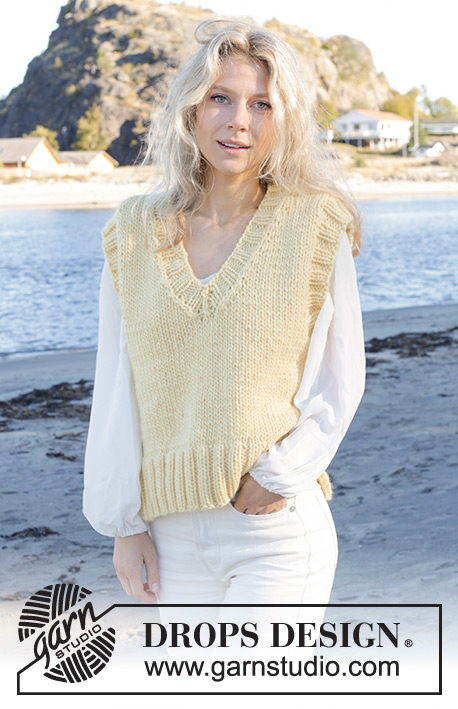
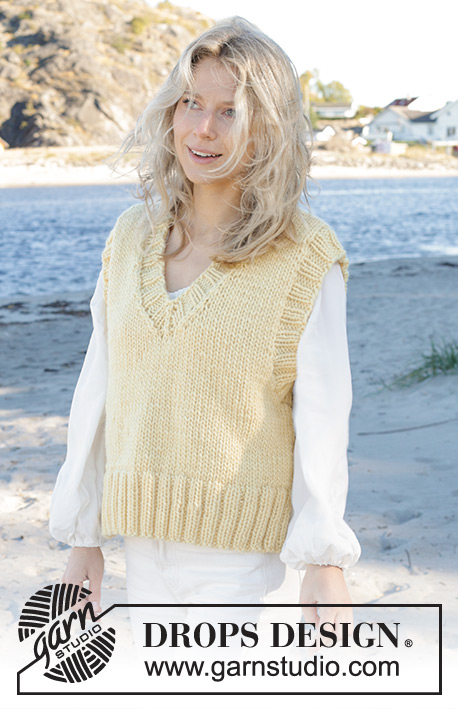
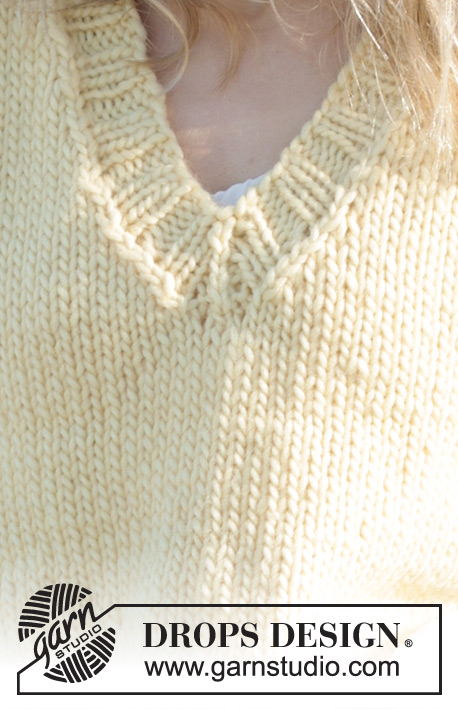

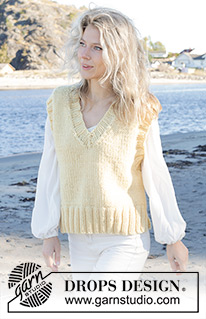

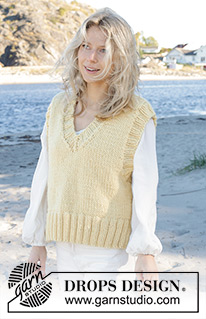








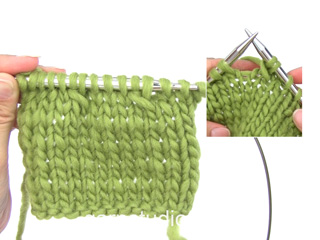














































Comments / Questions (16)
Hei igjen! Hvorfor går det mer garn med en tråd Snow enn med to tråder Air? Er det riktig til den oppskriften til Campus Rally Vest? Mvh Åse
26.04.2024 - 11:34DROPS Design answered:
Hej Åse, Ja! Det er 50 meter på DROPS Snow og 150 meter på DROPS Air (som da skal lægges dobbelt)
26.04.2024 - 11:45Hei. Hvorfor går det mindre garn av Drops Snow med en tråd, enn med Drops Air med to tråder?
26.04.2024 - 08:00DROPS Design answered:
Hej Åse, det gør der ikke.... ? i den største størrelse skal du bruge 600 g DROPS Snow eller 450 g DROPS Air
26.04.2024 - 10:59On the right front piece, do you slip that middle stitch then slip the next one then knit the third then slip both the middle stitch AND the second stitch over the third one? it's not very clear to me...thanks (something is wrong in my work because it looks like the left side is smaller than the right)
13.01.2024 - 18:32DROPS Design answered:
Dear CL, do you mean the simple decrease? Knit 1, slip 1, pass slipped stitch over knitted stitch? Simply decrease like this by the neck every 2nd or 4th row as stated. You can see a video on this here: https://www.garnstudio.com/video.php?id=208&lang=en. You also have another type of decrease for the V-neck; you can work it as shown in this video: https://www.garnstudio.com/video.php?id=736&lang=en. Happy knitting!
14.01.2024 - 23:31Bonjour , j'aimerai beaucoup faire ce pull mais j'ai les explications pour des aiguillles circulaires ( vendu sur fa..... et il n'etait pas note que c'etait a tricoter avec ce genre d'aiguilles ; serait il possible svp d'avoir les explications avec des aiguilles droites ?
05.12.2023 - 07:54DROPS Design answered:
Bonjour Nathalie, on tricote ici le dos et le devant en allers et retours sur aiguilles circulaires pour avoir suffisamment de place pour y loger toutes les mailles, vous pouvez donc les tricoter sur aiguilles droites; il vous faudra juste ajuster les explications du col pour le tricoter en allers et retours (cousez une des 2 épaules, tricotez le col puis cousez la 2ème épaule + le col). Retrouvez plus d'infos sur les aiguilles circulaires en général ici. Bon tricot!
05.12.2023 - 09:09Hi there, I am struggling to understand what is meant on the back piece to cast off stitches for the armholes. Could you please clarify this for me?
21.08.2023 - 11:08DROPS Design answered:
Dear Emma, when you reach the requested height for your size, cast off at the beginning of each row on each side (= both from right side and from wrong side) 3 stitches 1 or 2 times (see size, ) then 2 sts at the beg of next 2 rows (except in first size), and then 1 st at the beg of next 12-10-8-8-6-6 rows - make sure you cast off the same number of stitches on each side. Happy knitting!
21.08.2023 - 15:06Bonjour, Je vous remercie pour votre réponse, maintenant que me conseillez-vous ? c'est pour ma fille taille S et elle ne veut pas que ce soit trop serré, pour du coup il vaut mieux prendre 400 g DROPS Snow/50 g la pelote = 8 pelotes (et vous tricoterez avec 1 fil Snow), ou bien 300 g DROPS Air /5O la pelote = 6 pelotes (et vous tricoterez avec 2 fils Air). En clair, le modèle sur la photo est-il fait avec 1 fil ou 2 fils ? Je vous remercie pour votre réponse, Cordialement
03.07.2023 - 11:36DROPS Design answered:
Bonjour Mme Latrouite, pour la taille, suivez les indications de la réponse précédente, pour la laine, à vous (ou elle?) de choisir, le modèle présenté a été tricoté en DROPS Snow, retrouvez plus d'infos sur ces deux laines grâce à leurs nuanciers: Air et Snow. Votre magasin DROPS saura vous conseiller (même par mail ou téléphone). Bon tricot!
03.07.2023 - 13:36Je vous remercie pour votre réponse, maintenant que me conseillez-vous ? c'est pour ma fille taille S et elle ne veut pas que ce soit trop serré, pour du coup il vaut mieux prendre 400 g DROPS Snow/50 g la pelote = 8 pelotes (et vous tricoterez avec 1 fil Snow), ou bien 300 g DROPS Air /5O la pelote = 6 pelotes (et vous tricoterez avec 2 fils Air). Je vous remercie pour votre réponse, Cordialement
30.06.2023 - 17:52DROPS Design answered:
Bonjour Mme Latrouite, mesurez un vêtement similaire qu'elle a et dont elle aime la forme et comparez ces mesures à celles du schéma du bas de page, vous pourrez ainsi choisir plus facilement la taille et les quantités correspondantes. Retrouvez plus d'infos sur les tailles ici. Bon tricot!
03.07.2023 - 09:23Bonjour, J'aimerai de la fourniture pour le pull sans manches CAMPUS RALLY VEST sans manche en modèle S mais je ne sais pas combien de laine dois-je commander ? Pouvez-vous m'accompagner et me dire la quantité que je dois commander s'il vous plait ? Je vous remercie pour votre réponse, Cordialement
30.06.2023 - 14:27DROPS Design answered:
Bonjour Mme Latrouite, vous trouverez les fournitures nécessaires en haut de page, en S, il vous faudra soit 400 g DROPS Snow/50 g la pelote = 8 pelotes (et vous tricoterez avec 1 fil Snow), ou bien 300 g DROPS Air /5O la pelote = 6 pelotes (et vous tricoterez avec 2 fils Air). Si vous avez du mal à vous décider, n'hésitez pas à contacter votre magasin DROPS, même par mail ou téléphone, on saura vous aider. Bon tricot!
30.06.2023 - 16:08Bonjour, Pourquoi utiliser des aiguilles circulaires pour ce genre de modèle et pourquoi pas une paire d'aiguilles classique toutes droites ? Quelle la valeur ajoutée à utiliser des aiguilles circulaires ? merci pour vos réponses...Cordialement Anne Latrouite
21.06.2023 - 09:34DROPS Design answered:
Bonjour Mme Latrouite, en Norvège, comme dans beaucoup de pays d'Europe du Nord, il est très fréquent d'utiliser des aiguilles circulaires, même pour tricoter en allers et retours, on a ainsi suffisamment de place pour y loger toutes les mailles. Ici, vous tricoterez le dos et le devant en allers et retours mais la bordure des manches et le col se tricoteront en rond. Retrouvez ici quelques informations supplémentaires sur les aiguilles circulaires. Bon tricot!
21.06.2023 - 14:42Hi, Still waiting for an answer on the v neck front. As written its hard to understand. slip 2 stitches - does this mean to include the knitted stitch mid front? Please answer as I am stuck and have spent a considerable amount buying drops wool.
04.04.2023 - 17:17DROPS Design answered:
Hi George, The 2 slipped stitches include the mid-stitch, then you knit 1 and pass the 2 slipped stitches over the knitted stitch. Happy Easter!
05.04.2023 - 06:51